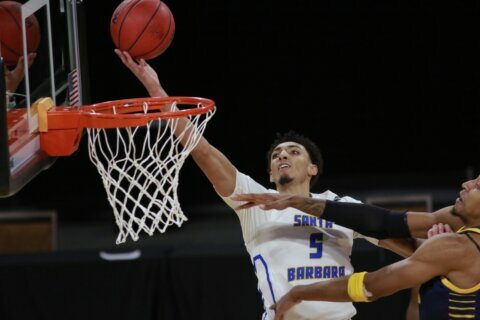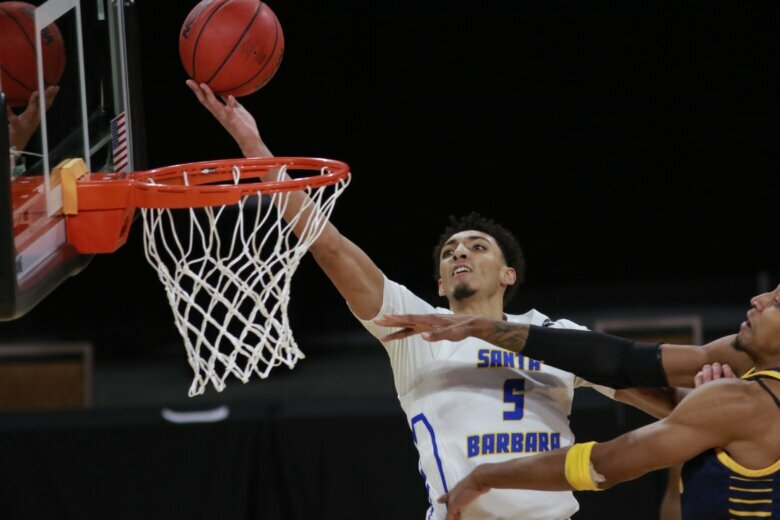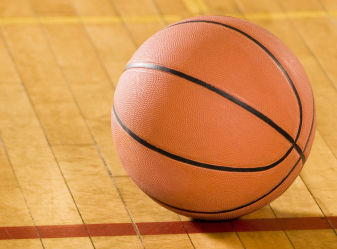
A year ago we were left with empty courts and empty brackets. Just as men’s college basketball conference tournaments jumped into action, officials shut them down. Players were sent back to campus wondering if they needed to pack up and head home.
There was no March Madness. The US was just beginning to embrace how serious the coronavirus pandemic was. When several conferences called off their postseason events on March 12, the World Health Organization had just declared a pandemic and the NBA had suspended its season.
At that point, here were about 1,650 cases and 41 deaths total in the US.
Now, with the nation recording 29.3 million cases and more than 534,000 deaths, the NCAA is getting ready for a tournament with a different look and different feel.
Here are some of the issues confronting tournament organizers in the era of Covid-19.
Will the tournament have the same number of teams this year?
At least one thing will be normal; the tournament will be played with 68 teams — 31 teams that earn an automatic bid by winning their conference and 37 teams selected by a committee. Some teams like Appalachian State and Drexel haven’t been to the big dance in a while. Hartford is making its first appearance.
What happens if a school has to drop out?
The NCAA has said once the brackets are announced Sunday at 6 p.m. ET, teams will not be reseeded. If schools cannot play, replacement teams will only be allowed into the tournament up to 48 hours after the brackets are released.
If a team that is a conference champion and the league’s lone representative cannot play, it will be replaced by another team from the conference.
If a team from a multi-bid conference cannot play, it will be replaced by a team that was among the first four teams the tournament selection committee left out.
Once games begin, if teams cannot field five players, they are out, and their opponents get free passes to the next round.
It is unclear what would happen if one of the Final Four teams has an outbreak.
Are the players staying and playing in a bubble?
The NCAA doesn’t call it a bubble, but all the games of the tournament are being played in Indiana. Most of the games are in Indianapolis, where many players and coaches will stay at hotels connected to practice sites and one arena by skywalks.
Other games are short bus rides away at arenas on the campuses of Purdue University and Indiana University.
Teams, when not playing, will be mostly isolated to their floors at the hotel. Players will eat in their rooms or in a room where people sit at least six feet apart.
How often will team members be tested?
Players, coaches, others who travel with the team and officials must have seven consecutive days of negative tests before they arrive in Indianapolis. After that they will be tested daily.
People who are two weeks from being fully vaccinated or who have had the virus and are within 90 days of that infection will not be required to test every day.
What will happen if a player tests positive?
A player who has a positive test will be presumed positive and go into isolation, Dan Gavitt, senior vice president for basketball for the NCAA, said this past week. All players will have a tracking device that can tell who the athlete has had contact with. The isolated player will take a second test — a PCR test, which uses a nasal sample. If that is also positive then the player will remain in isolation. A negative test result would lead to a third test — another PCR test.
Will there be fans in the stands?
Attendance for the games will be capped at 25% of arena size, the NCAA announced in February. That means about 17,500 people would be allowed to attend the Final Four at Lucas Oil Stadium.
“This year’s tournament will be like no other, and while we know it won’t be the same for anyone, we are looking forward to providing a memorable experience for the student-athletes, coaches and fans at a once-in-a-lifetime tournament,” Gavitt said.
All attendees — players’ and coaches’ families and fans — have to wear face coverings and maintain physical distance. In January, almost 15,000 people attended the Division I football title game at the Hard Rock Stadium in Miami Gardens, Florida.
At the Final Four, there will appear to be more fans as some seats will be filled by cutouts. Cutouts cost $100, benefit charities and can be purchased at ncaa.com/finalfour.
“As we seek to continue to engage fans during the Men’s Final Four, we want to make an impact beyond improving the atmosphere in the venue,” NCAA President Mark Emmert said.
Did you say all the games are in one state?
Here are the arenas to be used in the tournament:
Bankers Life Fieldhouse, Indianapolis, about 18,000 capacity
Hinkle Fieldhouse, Indianapolis, 9,100
Lucas Oil Stadium, Indianapolis, 70,000
Indiana Farmers Coliseum, Indianapolis, 6,800
Mackey Arena, West Lafayette, 14,222
Simon Skjodt Assembly Hall, Bloomington, 17,222
How is the schedule different?
Did you take off Thursday to sit in front of the TV from noon to midnight watching games? This year the play-in games, called the First Four, will be contested on Thursday instead of a Tuesday. The good news is Friday will still be packed with games.
Game days for the first two weekends have changed this year but the Final Four schedule is the same as years past:
- First Four, Thursday, March 18
- First round, Friday and Saturday, March 19-20
- Second round, Sunday, March 21, and Monday, March 22
- Sweet 16, Saturday, March 27, and Sunday, March 28
- Elite Eight, Monday, March 29, and Tuesday, March 30
- Final Four, Saturday, April 3
- NCAA championship game, Monday, April 5
Are there any teams or players who are not going to the tournament?
Several teams had to leave their conference tournaments because of positive tests.
The University of Virginia, technically the defending champion because it won the 2019 event, and the University of Kansas will have to show seven days of positive tests to be eligible to play.
The Ivy League did not play this season because of Covid-19.
What about the women’s tournament?
The women’s tournament will be held in Texas, at five sites in the host city of San Antonio and with some games in Austin and San Marcos.
The schedule is also different than years past with the first round beginning next Sunday. This year there will be some early games on Tuesday and Wednesday. The championship contest is scheduled for April 4.
Fan capacity at games in the last four rounds will be capped at 17% of arena size, the NCAA said in February.






